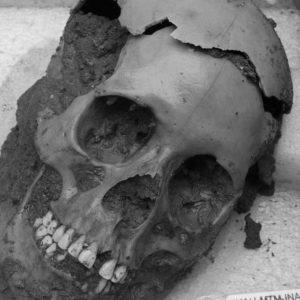Police found 150 skulls at a “crime scene” in Mexico. It seems the victims, mostly girls, have been ritually decapitated over 1,000 years ago.
Warning: Undefined variable $post_id in /home/webpages/lima-city/booktips/wordpress_de-2022-03-17-33f52d/wp-content/themes/fast-press/single.php on line 26

When Mexican police discovered a pile of about 150 skulls in a cave near the Guatemalan border, they thought they had been against the law scene, and took the bones to the state capital.
It seems it was a very chilly case.
It took a decade of checks and analysis to find out the skulls had been from sacrificial victims killed between A.D. 900 and 1200, the National Institute of Anthropology and Historical past said Wednesday.
A cranium found at the archaeological website Templo Mayor sits on show in Mexico Metropolis, Friday, Oct. 5, 2012. Alexandre Meneghini / AP"Believing they had been looking at against the law scene, investigators collected the bones and started inspecting them in Tuxtla Gutierrez," the state capital, the institute, often called INAH, stated in a statement.
The police in 2012 weren't being stupid; the border space across the city of Frontera Comalapa in southern Chiapas state has lengthy been affected by violence and immigrant trafficking. And pre-Hispanic cranium piles in Mexico usually present a gap bashed by way of both sides of every cranium, and have been usually present in ceremonial plazas, not caves.
But experts said Wednesday the victims in the cave had in all probability been ritually decapitated and the skulls put on display on a type of trophy rack often called a "tzompantli." Spanish conquistadores wrote about seeing such racks in the 1520s, and a few Spaniards' heads even wound up on them.
Whereas normally strung on wooden poles using holes bashed via them - the frequent observe among the Aztecs and different cultures - consultants say the cave skulls could have rested atop poles, moderately than being strung on them.
Apparently, there were more females than males among the many victims, and none of them had any tooth.
In gentle of the cave expertise, archaeologist Javier Montes de Paz stated folks ought to probably name archaeologists, not police.
"When people discover one thing that could be in an archaeological context, do not touch it and notify native authorities or instantly the INAH," he mentioned.
In 2015, archaeologists discovered the principle trophy rack of sacrificed human skulls at Mexico Metropolis's Templo Mayor Aztec spoil site.
That same year, artifacts found at the Zultepec-Tecoaque spoil web site revealed evidence from when hundreds of people in a Spanish-led convoy had been captured, sacrificed and apparently eaten.
A 2016 examine found that in societies where social hierarchies have been taking shape, ritual human sacrifices targeted poor individuals, helping the powerful control the decrease classes and maintain them in their place.
Trending News